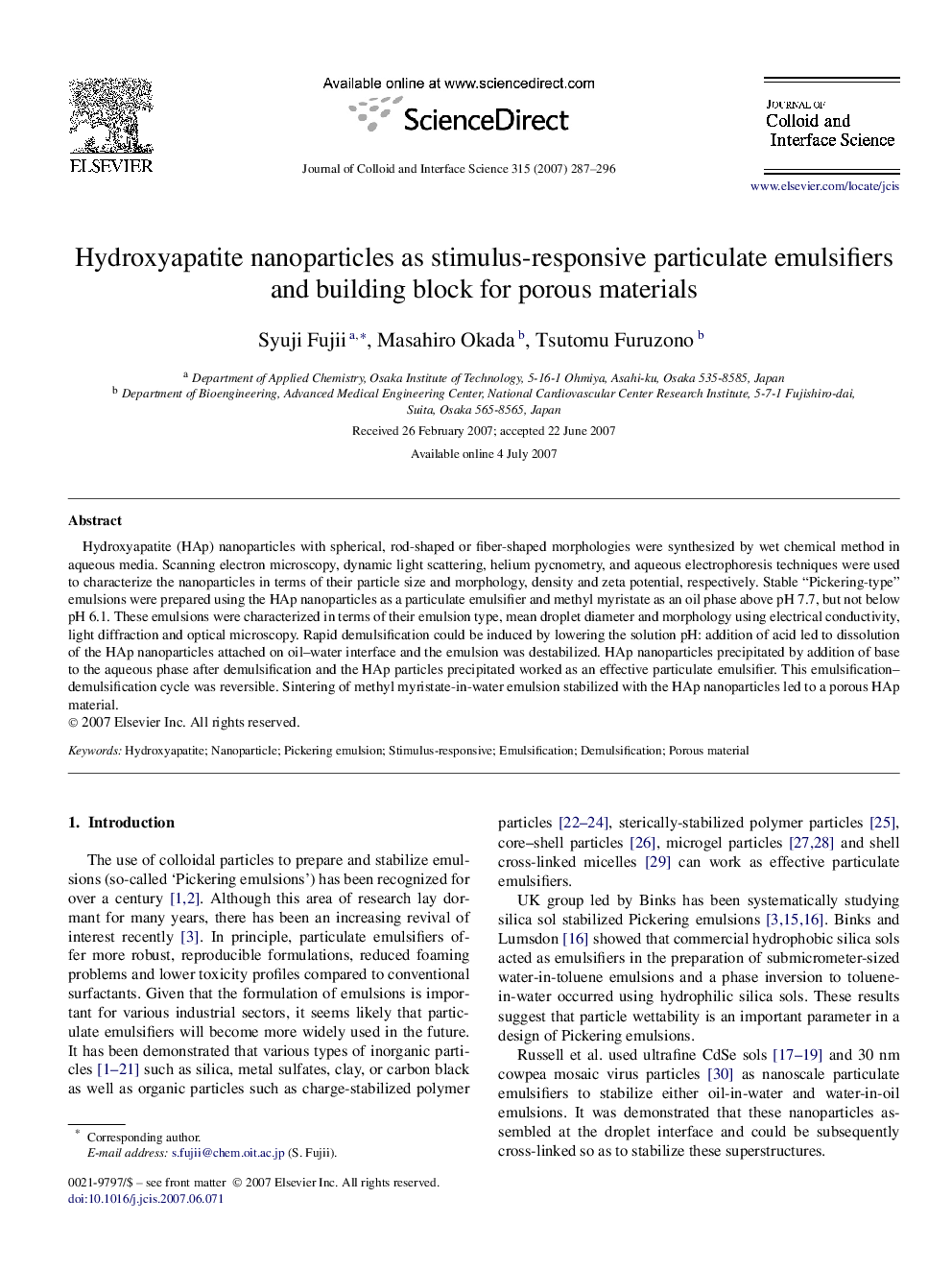| Article ID | Journal | Published Year | Pages | File Type |
|---|---|---|---|---|
| 612288 | Journal of Colloid and Interface Science | 2007 | 10 Pages |
Hydroxyapatite (HAp) nanoparticles with spherical, rod-shaped or fiber-shaped morphologies were synthesized by wet chemical method in aqueous media. Scanning electron microscopy, dynamic light scattering, helium pycnometry, and aqueous electrophoresis techniques were used to characterize the nanoparticles in terms of their particle size and morphology, density and zeta potential, respectively. Stable “Pickering-type” emulsions were prepared using the HAp nanoparticles as a particulate emulsifier and methyl myristate as an oil phase above pH 7.7, but not below pH 6.1. These emulsions were characterized in terms of their emulsion type, mean droplet diameter and morphology using electrical conductivity, light diffraction and optical microscopy. Rapid demulsification could be induced by lowering the solution pH: addition of acid led to dissolution of the HAp nanoparticles attached on oil–water interface and the emulsion was destabilized. HAp nanoparticles precipitated by addition of base to the aqueous phase after demulsification and the HAp particles precipitated worked as an effective particulate emulsifier. This emulsification–demulsification cycle was reversible. Sintering of methyl myristate-in-water emulsion stabilized with the HAp nanoparticles led to a porous HAp material.
Graphical abstractHydroxyapatite nanoparticles were used as a pH-responsive particulate emulsifier in order to stabilize “Pickering-type” oil-in-water emulsions. The emulsification–demulsification cycle was reversible by changing the solution pH.Figure optionsDownload full-size imageDownload as PowerPoint slide
